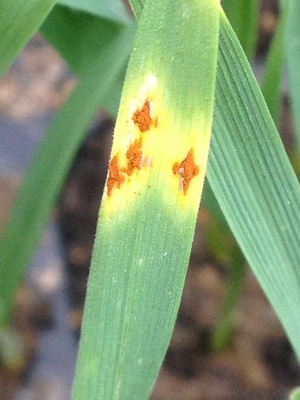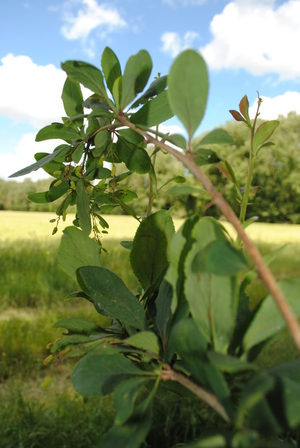- About
-
Research
- Agronomy and farming systems
-
Agricultural crop research
-
Research projects - agriculture
- About SASSA-SAI
- BioBoost
- Biomass Connect
- CTP for Sustainable Agricultural Innovation
- Climate Ready Beans - workshop presentations (March 2022)
- Crop diversity HPC cluster
- Designing Future Wheat
- Final project workshop
- Get involved
- List of materials
- News and updates
- Partners
- Rustwatch
- The Sentinel Crop Disease Surveillance Network
- The research team
- UK Cereal Pathogen Virulence Survey
- UK wheat varieties pedigree
- Weed management - IWM Praise
- Crop breeding
- Crop characterisation
- Data sciences
- Genetics and pre-breeding
- Plant biotechnology
- Plant pathology and entomology
- Resources
-
Research projects - agriculture
-
Horticultural crop research
-
Research projects - horticulture
- Augmented Berry Vision
- BEESPOKE
- Boosting brassica nutrition in smart growing systems
- CTP for Fruit Crop Research
- Develop user-friendly nutrient demand models
- Egg laying deterrents for spotted wing drosophila
- Enhancing the nutritional quality of tomatoes
- Improving berry harvest forecasts and productivity
- Improving vineyard soil health through groundcover management
- Intelligent growing systems
- Knowledge transfer for sustainable water use
- POME: Precision Orchard Management for Environment
- RASCAL
- STOP-SPOT
- UV-Robot
- Crop science and production systems
- Genetics, genomics and breeding
- Pest and pathogen ecology
- Field vegetables and salad crops
- Plum Demonstration Centre
- The WET Centre
- Viticulture and Oenology
-
Research projects - horticulture
- Crop Science Centre
-
Services
- Analytical Services
- Business Development
- Commercial trial services
- Membership
- Plant breeding
- Plant characterisation
- Seed certification
-
Training
-
Technical agronomy training
- Advanced crop management of bulb onions
- Advanced crop management of vegetable brassicas
- Advanced nutrient management for combinable crops
- Benefits of cover crops in arable systems
- Best practice agronomy for cereals and oilseed rape
- Developing a Successful Strategy for Spring Crops
- Disease Management and Control in Cereal Crops
- Incorporating SFI options into your rotation
- Protected Environment Horticulture – Best Practice
- Techniques for better pest management in combinable crops
- Crop inspector and seed certification
- Licensed seed sampling
-
Technical agronomy training
- News & Views
- Events
-
Knowledge Hub
- Alternative and break crops
-
Crop genetics
- POSTER: Diversity enriched wheat (2025)
- POSTER: Genetics of wheat flag leaf size (2024)
- POSTER: Wheat yield stability (2024)
- Poster: Traits for future cereal crops (2022)
- POSTER: wild wheat fragment lines (2022)
- POSTER: Improving phenotyping in crop research (2022)
- PRESENTATION: Plant breeding for regen ag
- Poster: Designing Future Wheat (2020)
- Crop nutrition
-
Crop protection
- POSTER: Understanding the hierarchy of black-grass control (2025)
- POSTER: Emerging weed threats (2025)
- POSTER: Disease control in barley (2025)
- Poster: Weed seed predation in regen-ag (2024)
- POSTER: Disease control in winter wheat (2025)
- POSTER: Mode of action (2023)
- POSTER: Inter-row cultivation for black-grass control (2022)
- POSTER: UKCPVS winter wheat yellow rust in spring 2025 (2025)
- Poster: Management of Italian ryegrass (2021)
- POSTER: UKCPVS winter wheat rusts - 2024/25 review (2025)
- POSTER: UKCPVS disease monitoring and the benefit to UK growers (2025)
- POSTER: Diagnosing and scoring crop disease using AI (2025)
- POSTER: Finding new sources of Septoria resistance (2024)
- POSTER: Fungicide resistance research (2024)
- POSTER: Detecting air-borne pathogens (2024)
- POSTER: Oilseed rape diseases (2024)
- POSTER: Fungicide resistance research (2024)
- POSTER: Improving chocolate spot resistance (2022)
- Poster: Pathogen diagnostics (2022)
- Fruit
- Regen-ag & sustainability
-
Seed certification
- POSTER: Wheat DUS (2024)
- POSTER: Innovation in variety testing (2024)
- POSTER: AI and molecular markers for soft fruit (2024)
- POSTER: Barley crop identification (2023)
- POSTER: Herbage grass crop identification (2023)
- POSTER: Herbage legume crop identification (2024)
- POSTER: Minor cereal crop inspecting (2023)
- POSTER: Pulse crop identification (2023)
- POSTER: Wheat crop identification (2023)
-
Soils and farming systems
- POSTER: Checking soil health - across space and time (2024)
- POSTER: Checking soil health - step by step (2024)
- POSTERS: Changing soil management practices (2022)
- Poster: Monitoring natural enemies & pollinators (2021)
- POSTER: Soil structure and organic matter (2024)
- POSTER: Novel wheat genotypes for regen-ag (2024)
- Video: New Farming Systems project (2021)
- Video: Saxmundham Experimental Site (2021)
- POSTER: Impact of prolonged rainfall on soil structure (2024)
- POSTER: Soil & agronomic monitoring study (2024)
- POSTER: The impact of rotations & cultivations (2024)
- VIDEO: Great Soils; soil sampling guidelines (2020)
- Poster: Soil invertebrates within arable rotations (2024)
- VIDEO: Soil health assessment (2021)
- POSTER: Saxmundham - modern P management learnings
- POSTER: Saxmundham - 125 years of phosphorus management
- Poster: Soil phosphorus - availability, uptake and management (2025)
- POSTER: Morley long term experiments (2025)
- POSTER: Exploiting novel wheat genotypes for regen-ag (2025)
- Video: Saxmundham Experimental Site (2021)
- Varieties
NEWS: New study on wheat stem rust calls for close monitoring
NIAB is part of a new study on a wheat stem rust sample found in the UK in 2013, the findings of which have been published by the John Innes Centre (see below). NIAB’s input in testing the unusual disease was supported by the H2020 project EMPHASIS (Grant Number 634179) which is exploring ways to control a wide range of alien and emerging pest and disease threats in Europe. NIAB pathologist Dr Jane Thomas adds that there have now been multiple unexpected outbreaks of stem rust in other parts of Europe, and the UK finding shows that continued vigilance will be necessary in this country as well.

PRESS RELEASE
First report in decades of a forgotten crop pathogen calls for critical close monitoring, new study cautions
Scientists, breeders, farmers and conservation groups must continue to work in close collaboration to prepare for the potential re-emergence of a forgotten crop pathogen, a new study advises today.
Work between groups has already started following the discovery of a single wheat plant infected with stem rust - the first confirmed case of the plant disease in the UK in over 60 years. Stem rust of wheat and barley has throughout history been associated with crop failure and famine, and has recently re-emerged in western Europe.
Following the discovery of a single infected wheat plant in Suffolk in 2013, Dr Diane Saunders and Dr Brande Wulff from the John Innes Centre in Norwich, led a global team of collaborators to carry out genetic tests that compared this strain to the dominant global populations of the pathogen. Their results showed that the UK strain belongs to the Digalu race of the fungus, which was responsible for a devastating outbreak of stem rust in Ethiopia in 2013, and smaller outbreaks in Sweden, Denmark, and Germany in the same year.
Further investigations carried out by Dr Jane Thomas, at NIAB in Cambridge, found that over 80% of UK wheat varieties tested are susceptible to the UK strain of this pathogen. This indicates that if the strain became established in the UK, a large proportion of UK wheat could be at risk.
The research team warns that UK and European wheat and barley crops could be under threat from a perfect storm of conditions favourable to stem rust resurgence.
Dr Daniel Bebber at Exeter University, UK, showed that changes in climatic conditions over the past 25 years suggest increasingly conducive conditions for fungal pathogen growth and infection.
Paul Fenwick, cereal pathologist at Limagrain UK Ltd and co-author of the study, said: “The discovery of stem rust in Suffolk has so far been an isolated one-off occurrence in 2013; however, with global temperatures set to rise by another 1 or 2 degrees over the next century, stem rust could extend its geographic range. Therefore, there is the potential for stem rust to become an ever-increasing threat across Europe and so research, such as this, will help to underpin breeding for resistance in the future.”
In addition to the lack of resistance in European wheat varieties, in recent years the alternate host of the pathogen, Barberry, has also been increasing in popularity. This hedgerow shrub plays a key role in the life cycle of several rust pathogens including wheat stem rust.
The Barberry shrub was largely removed across England up until the early part of the 20th century, as farmers noticed that cereal crops grown adjacent to Barberry bushes were at greater risk of stem rust. However, over the last twenty years or so Barberry shrubs have been planted in efforts to conserve the Barberry Carpet moth, an endangered species. Much of this planting is focussed on the relatively few areas where the moth is found, although other plantings have occurred elsewhere.
In the current study, the authors identified cereal rust on Barberry in the UK for the first time in decades. Dr Diane Saunders said: “This highlights the critical need for close management of Barberry planting.”
Worryingly in the same year Sweden also witnessed the first report in Europe for decades of a highly diverse wheat stem rust epidemic that originated from Barberry. Dr Saunders said positive work was already taking place between her group at the John Innes Centre and conservation groups working to enhance habitats for the Barberry Carpet Moth.
Mark Parsons of Butterfly Conservation said “We are very concerned about the potential risk from the possible re-establishment of stem rust in this country and the impact it could have on agriculture and the environment. The Barberry Carpet moth is an endangered species restricted to just a handful of sites in this country, it being reliant on Common Barberry for survival. We are, therefore, pleased to be working closely with the John Innes Centre both to minimise the potential risk from cereal rust, but also to enhance the populations of the Barberry Carpet, and therefore increase its chances of survival in this country.”
The next steps in this process, says Dr Saunders, is a larger study to map and sample Barberry across the UK working alongside conservation groups. “Replanting Barberry in woodlands, gardens and areas away from arable land would ensure we provide vital habitat for the endangered Barberry Carpet moth, whilst limiting its potential impact on enhancing rust pathogen diversity.”
The study “Potential for re-emergence of wheat stem rust in the United Kingdom” published today in “Communications Biology” urges: “the re-initiation of resistance breeding and a review of the mass plantation of common barberry to preclude re-planting near arable land and thereby limit the ability of the pathogen to rapidly overcome any introduced resistance and/or climatic constraints to safeguard European cereals from a large-scale re-emergence of wheat stem rust.”
Background information:
The role of Barberry in the life cycle of stem rust: Cereal rusts have very complicated life cycles, involving five different types of spore and two hosts that they live on in different stages of their life cycle. On cereal crops, stem rust undergoes asexual reproduction, using the plant’s own resources to produce millions of genetically identical spores. The type of spores it generates on cereals can travel on the wind thousands of kilometres. However, when Barberry is next to a cereal field the pathogen uses it as an alternate host to complete its sexual cycle, potentially leading to a swath of new genetic strains. Fortunately, the spores that form on Barberry only travel short distances, likely up to 10-20 meters, so for a Barberry bush to spread rust to a cereal field, they must be in close proximity.
ENDS







